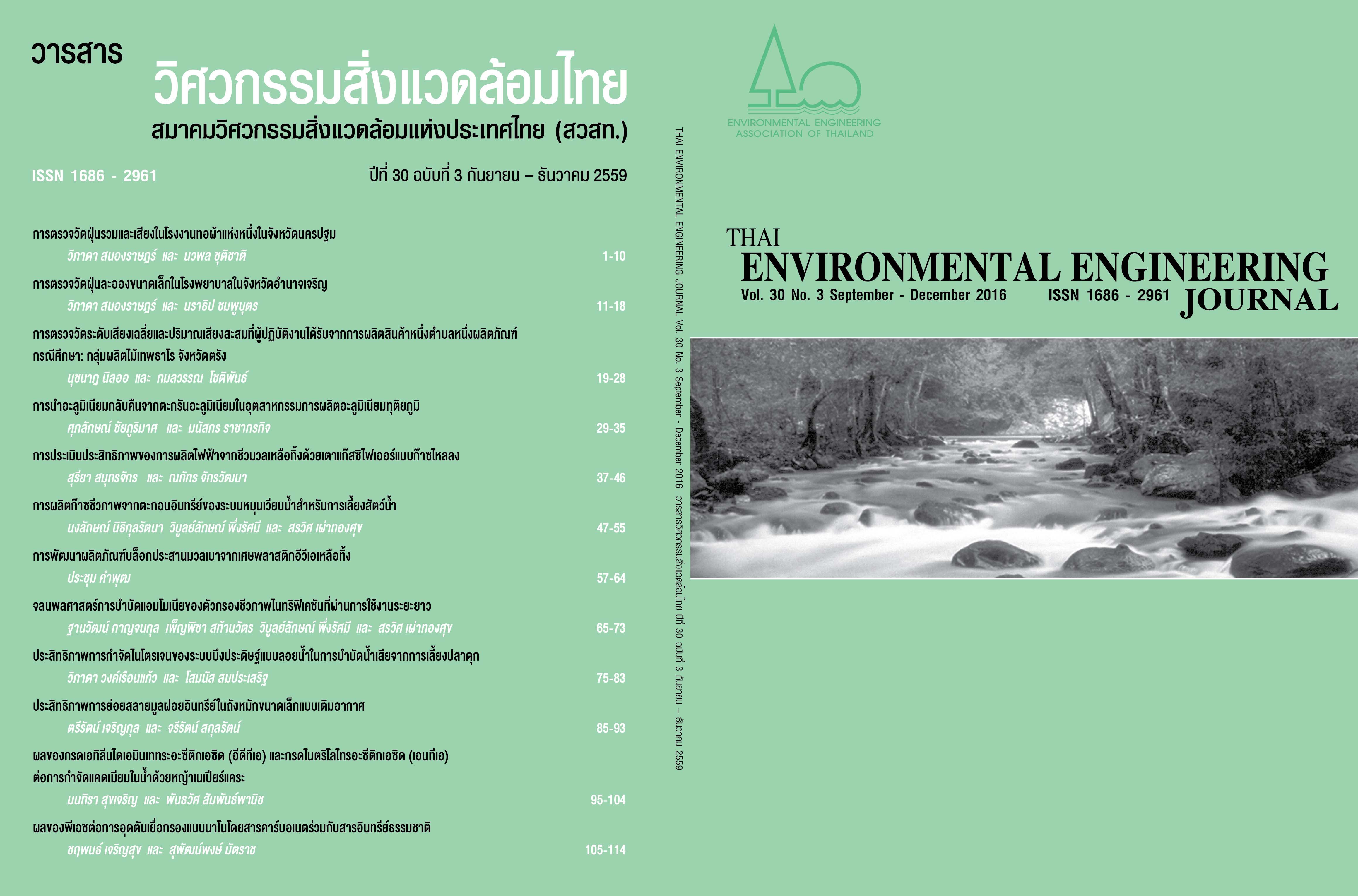Development of Light-weight Interlocking Block Productfrom EVA Plastic Wastes
Main Article Content
Abstract
This research has objective to taking EVA Plastic Wastes from slipper factory as total mass replaced coarse aggregates in produce interlocking block, ratio of cement : stone dust: water supply equal as 1 : 6: 1.5 by weight. Moreover, specify replaced stone dust as EVA plastic waste via sieve no. 4 as follows; stone dust: EVA plastic waste equal as 5.960 : 0.040, 5.955 : 0.045, 5.950 : 0.050, 5.945 : 0.055 and 5.940 : 0.060, respectively. Mixed and casted interlocking block using compressors hand as interlocking block sample, a block size of 12.5 cmx 25 cm x 10 cm, testing according to various standards of TCPS. 602-2547, testingthermal conductivity standard of ASTM C177. Result oftest found that weight per pack, water absorption, drying shrinkage, compressive strength and thermal conductivity has downward trend when mixed EVA plastic waste increasing amounts, respectively. All ratios, with all the criteria set so can taking EVA plastic waste is total mass for mixing replaced stone dust in interlocking block products. It also offers advantages in terms of heat insulation properties than general interlocking block.
Article Details
References
[2] Prachoom, K., Somkiat,R. and Kittipong, S. 2011. Interlocking block from kaolinite top soil.Proceeding of 4thRajamangala University of Technology Conference, Chonburi. (in Thai)
[3] Thai Industrial Standards Institute (TISI). 2004. Thai community product standard of interlockingblock (TCPS 602-2004). Thai Industrial Standards Institute, Ministry of Industry. (in Thai)
[4] American Society for Testing and Materials (ASTM). 2010. Standard Test Method for Steady-State Heat Flux Measurements and Thermal Transmission Properties (ASTM C177 – 10). Annual Book of ASTM Standards. Philadelphia.
[5] Danupon,T. 2009. Minerals. 2nd Ed. Faculty of Engineering, Prince of Songkla University. (in Thai)
[6] Danupon,T. 2010. Minerals and rocks. 2nd Ed. Faculty of Engineering, Prince of Songkla University. (in Thai)
[7] Aly, T. and Sanjayan, J.G. 2010. Effect of Pore-Size Distribution on Shrinkage of Concretes.Journal of Materials in Civil Engineering, Vol.22, pp.525-532.
[8] McCrum, N.G., Buckley, C.P. and BucknaIi, C.B. 1997. Principles of Polymer Engineering.Oxford University Press.2nd Ed. pp.447.
[9] Vinit, Ch. 1996. Concrete technology.8th Ed.Por.Samphan printing services.Bangkok. (in Thai)
[10] Khamput, P.,Tantavoranart, S. andSuweero, K. 2014.Improving the Thermal Insulation Properties of the Concrete Block with EVA Plastic Scrap.KKU-IENC2014, Pullman KhonKaen Raja Orchid Hotel, KhonKaen.p.12.
[11] Young, Hugh D. 1992. Hyper Physics.University Physics. Addison Wesley.


